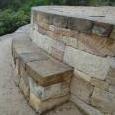Search the Community
Showing results for tags 'fixing'.
-
Hi, I am planning a project to make a concrete shed into a live-able room. The walls are made of concrete and the roof is made of wood, I plan on insulating the roof but I'm not sure weather I need to insulate the concrete walls or just the concrete will be enough to keep it warm all year round....
-
Just a quick one: does a wall plate (rim joist) have to be a continuous piece of timber? I ask because a visiting rep asked me if I needed the wall plate to be one continuous piece of timber. Maximum uninterrupted run is just under ten meters. Nowhere in the architect's notes does he mention...
- 25 replies
-
- wall plates
- rim joist
-
(and 2 more)
Tagged with:
-
Hi all, Very much a novice with a small project here but this looks like the place to come to get some great advice and experience. We are landscaping our garden and have just finished decking outside the kitchen door area. There is a very ugly block concrete wall directly...
-
Up to now, I have needed to fix large bits of wood into concrete. And I'm (well, was) happy with that until I found myself reaching for a 10mm SDS bit and Thunderbolts to attach something quite small to the wall. . I'll soon be hanging a range of things into the concrete walls, from elec...
-
Reading this thread and all the dire warnings written there sent me scurrying off into Tinternet to look and see what I can find. Well, the only method of fixing them I haven't found was by using bubblegum. There's oodles of guidance and I have read a good deal of it. MiTek say that...
-
I am adding 25mm of calotex to the underside of my rafters which have 170mm already in them. I will then be putting up osb and then plasterboard. My question is should i use everbuild pink grip or soudel low expansion foam to initially hold them in place. I imagine i would cut the sheets...
-
As some know, I've been pre-occupied this week tarting up the only room in our current house (which is shortly going on the market), that I've not decorated or renovated, the downstairs loo. It's always been grim, but it works and we've just got used to it, so have never done anything about it. It...


